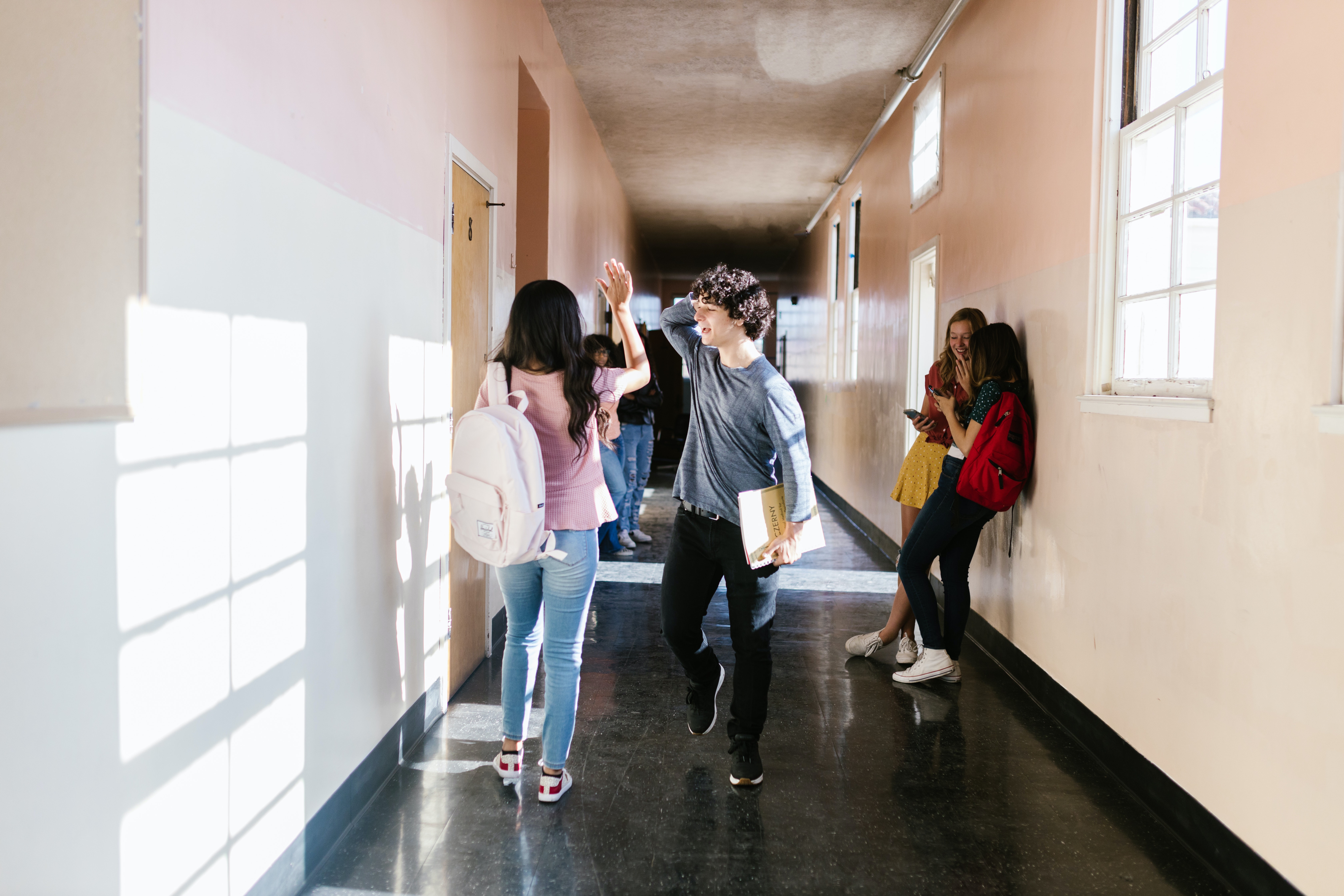Student Advice on Centering Mental Health by Welcoming Students as They Are
The pandemic placed student mental health at the forefront of education, but how schools reopen could help us build a more resilient and caring education.

The pandemic and its aftermath brought student mental health into the spotlight. It’s brought a tsunami of trauma to our teens, increasing teen stress levels and cutting natural support networks. As we saw typical supports disrupted, XQ worked to create a free, self-paced stress management course to provide high schoolers with tools and extra support to manage stress during remote learning.
While high schools are preparing for a fall semester that may be the closest to “normal” since March of 2020, we know students are seriously struggling; so how will schools respond, especially considering that high school students were experiencing a mental health crisis even before the pandemic?

“What I truly fear is a scenario in which COVID seems to be getting better, and things continue to progress without any actual support for students,” shares Arielle Geismar, a college student and mental health advocate. “We were already having issues with mental health visibility for students before COVID. … So I’m really worried about my peers’ mental health, if this all goes completely unaddressed.”
A Challenge and an Opportunity
There’s no doubt that the stakes for addressing student mental health this upcoming school year are high. However, in this challenge, schools also have the opportunity to step up for students, and rethink what their communities can be.
Taking student mental health seriously means taking students seriously as citizens, community members, and people—and inviting students to bring their whole selves into the school and classroom.
Arielle explains, “[A high school centered on mental health] can be a rigorous high school, it can be a challenging high school, it can be an engaging one that uplifts students, but it’s also one that sees students for who we are—and that is young, developing people.”

For schools, enacting this environment of challenge and care will require centering mental health at every level: from small moments in the classroom, to larger curriculum changes. It’s a tall order—but taking the opportunity to do this work now is essential in developing high school students who are resilient, engaged, and ready to meet the world.
Academics vs. Mental Health: Breaking Down the Binary
Too often, academics and mental health are presented as either/or priorities. Even for educators who know better, this binary might be tempting to fall back on when academic stress is high—like in the rush to address post-COVID learning loss.
Educators can avoid this either/or thinking by understanding mental health as a constant focus, rather than a one-time intervention. Instead of asking “How can I fix this problem so we can move on?”, teachers can ask, “How can I make my class a space that meets students where they are each day?”
“A teacher’s understanding in terms of mental health can go so far,” Arielle explains. “Even just the smallest, ‘Hey, you look really tired. Don’t worry about the homework tonight.’ … Just ask yourself, what are small ways I can support my classroom and make small compromises. Because those small compromises will make a huge difference to your students.”

Adopting this lens of supporting mental health also means rethinking how we interpret students who are struggling academically. A mental health-focused approach sees a student who has fallen behind and asks, “What might be causing this, and how can we help?”
“It’s scary to think how many students have slipped through the cracks of academic institutions, just because they were labeled as failing students,” Arielle says, “when in reality, these students likely had a lot going on. There were probably a lot of other factors that came into play.”
A Responsive Curriculum
Schools can also center mental health by emphasizing social emotional learning, and offering skills and strategies students can use in their own lives. Our Teen Stress Badge curriculum walks teens through this approach: learning about stress, recognizing their own experiences, and creating a stress-management plan.
“One of the best things that [educators] can do for our development is to teach us how to take care of ourselves and each other,” Arielle says. “That should be a whole class in high school: how do you take care of yourself? How do you take care of other people?”
Teaching these skills is critical to students’ development as learners and people. It can also improve students’ relationship to school as a whole, by making school a place that feels responsive to their actual lived experiences.

“[A mental health-centered school] will be one that sees a student as a whole person,” Arielle explains, “not as someone who just comes in the door to learn and leaves their problems at the door, then picks their problems back up when they leave. That’s not how life works.”
Community Transformation
Ultimately, weaving a focus on mental health into the very fabric of a school community means thinking at a communal level: how can students relate to adults and, most importantly, to each other, to create an environment of robust support?
“In order to form a school that, in terms of mental wellness, is community-oriented, at the core would be teaching students to celebrate diversity, to celebrate each other, and using tried and true methods of community organizing,” Arielle explains.
Uplifting student voice and hearing from students about the specific needs of their communities is especially critical given the disparities in access to mental healthcare, with many students lacking access to basic supports like school counselors. (Sidenote: check out our resources on American Rescue Plan funding to explore how your school might access funds to support student mental health.)
Supporting student mental health is a long-term commitment, one that will evolve alongside what students face in the world. In building community and power amongst themselves, students can find strength and resilience for that journey.

This sense of community is what Arielle holds close when looking towards the future. “What makes me hopeful? Young people,” Arielle says, “Young people make me hopeful. Seeing other students advocate. Finding community and friends and value in advocating for mental health gives me a lot of hope.”
Join XQ in supporting the students in your community with our Stress Badge, and invite your students to build those skills of advocacy and resilience.
—
Related Resources:
- Join the XQ Yearbook—for every valid submission, XQ will donate $2 in support of student mental health!
- Learn more about how stress and mental health are interrelated.









